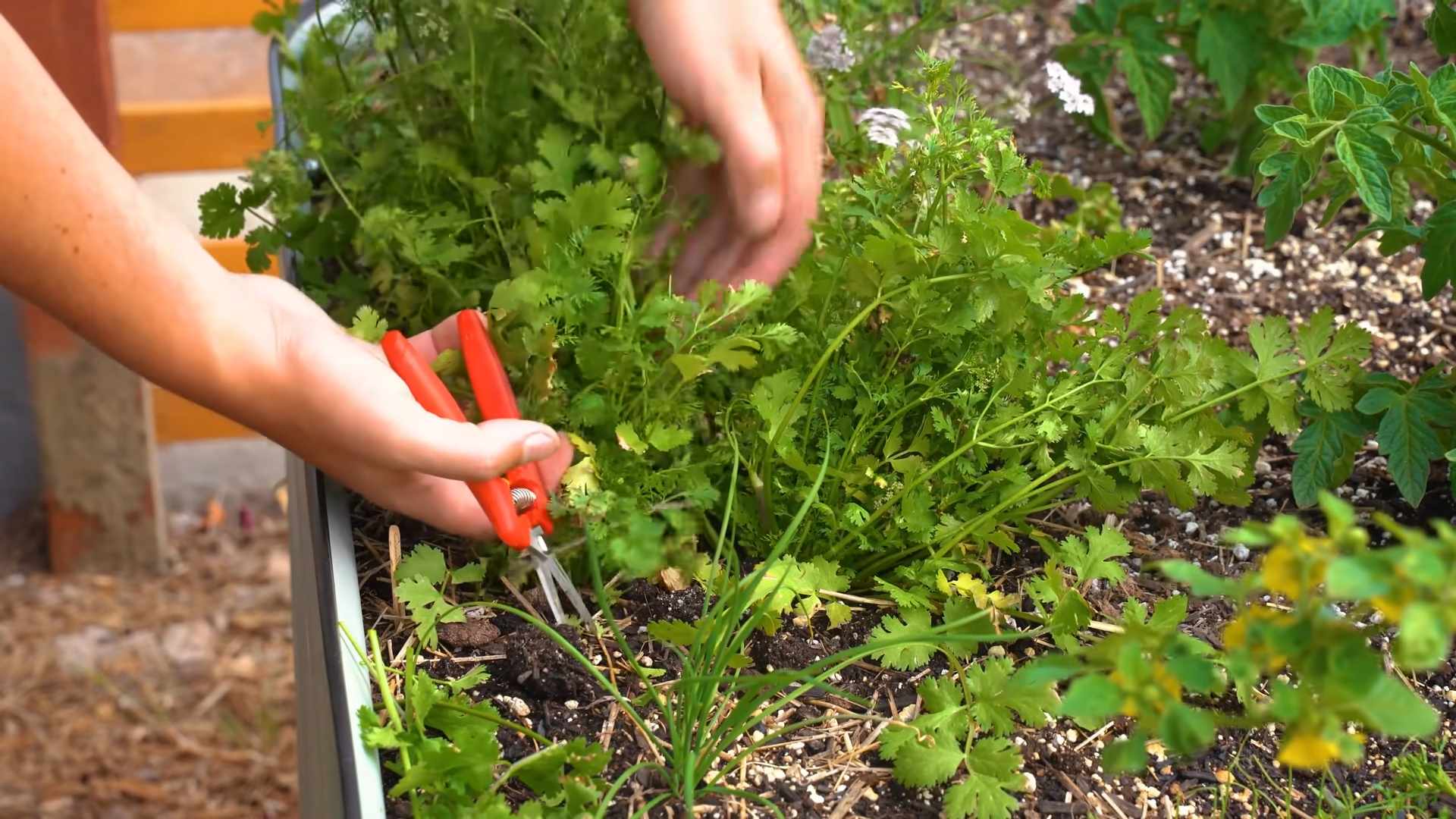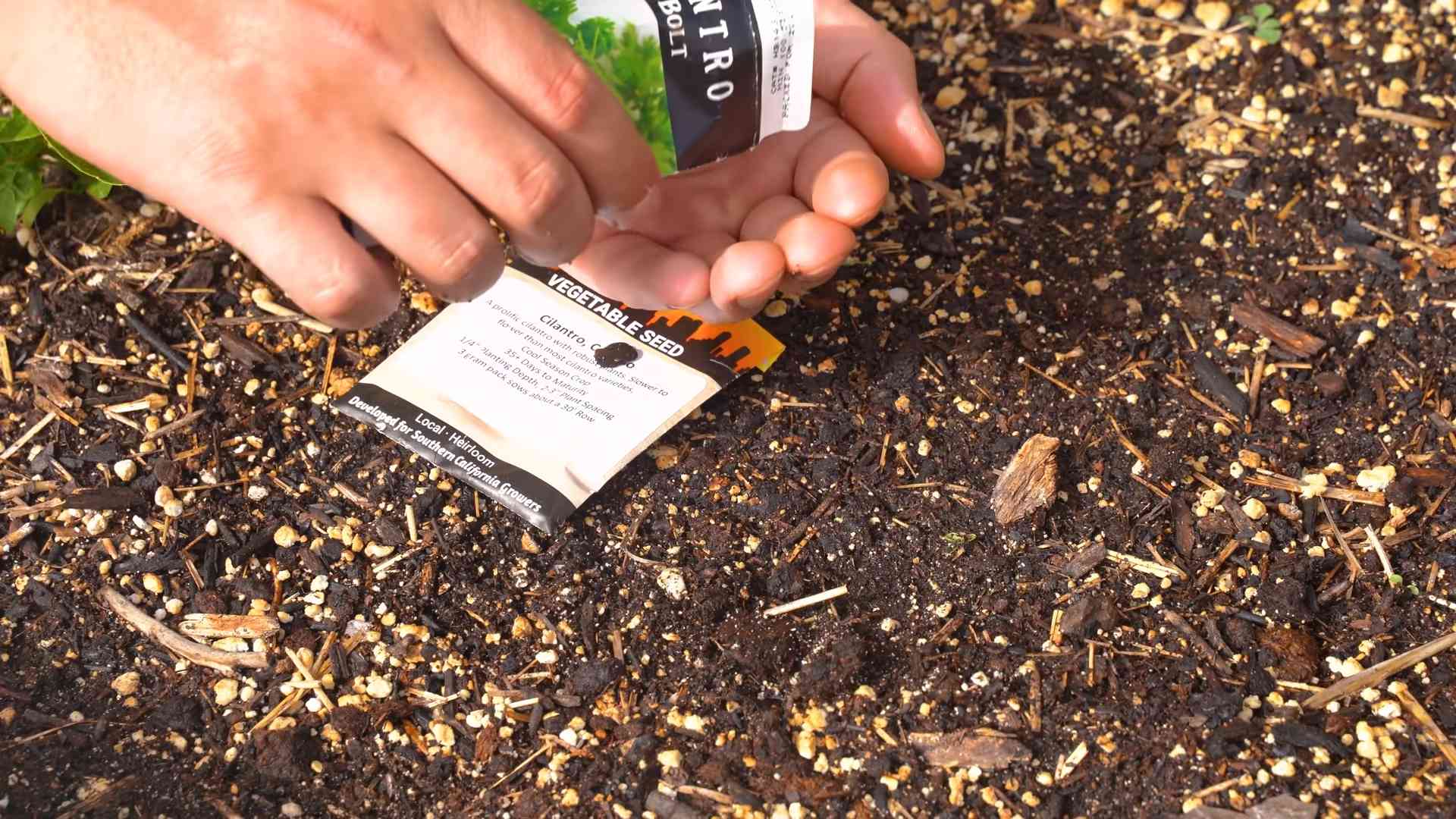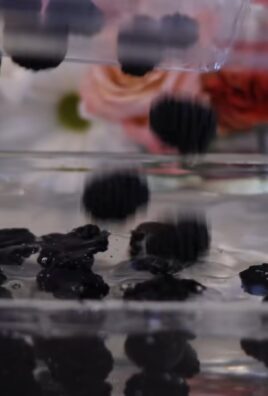Prevent Cilantro Bolting: Are you tired of your cilantro turning bitter and going to seed before you can even enjoy it? I know I was! There’s nothing more frustrating than nurturing a beautiful herb garden, only to have your cilantro bolt at the first sign of warm weather. But don’t worry, I’m here to share some simple, effective DIY tricks to keep your cilantro fresh and flavorful for longer.
Cilantro, also known as coriander, has a rich history dating back thousands of years. Evidence suggests it was used in ancient Egypt and even mentioned in the Bible. For centuries, cultures around the world have valued cilantro for its culinary and medicinal properties. However, its tendency to bolt quickly can be a real challenge for home gardeners.
Why is preventing cilantro bolting so important? Well, once cilantro bolts, its leaves become bitter and unpalatable, rendering it virtually useless in the kitchen. This DIY guide will equip you with the knowledge and techniques to extend your cilantro’s lifespan, ensuring a continuous supply of fresh, flavorful leaves for your favorite dishes. I’ll walk you through easy-to-implement strategies, from choosing the right varieties to providing optimal growing conditions, so you can finally say goodbye to bitter cilantro and hello to a thriving herb garden!

Prevent Cilantro Bolting: My Foolproof Guide to a Long-Lasting Harvest
Cilantro, oh cilantro! I love its fresh, vibrant flavor in my tacos, salsas, and even sprinkled on top of my morning eggs. But like many gardeners, I’ve battled the dreaded bolting – that frustrating phenomenon where your cilantro plant suddenly shoots up a flower stalk, turning the leaves bitter and rendering them practically useless. Don’t worry, though! After years of trial and error, I’ve developed a few tricks to keep my cilantro happy and productive for much longer. Let me share my secrets with you!
Understanding Why Cilantro Bolts
Before we dive into the how-to, let’s quickly understand why cilantro bolts in the first place. It’s all about stress! Cilantro is a cool-season herb, and it’s sensitive to heat. When temperatures rise, especially during long summer days, the plant thinks its life is ending and rushes to reproduce by flowering and setting seed. Other stressors like inconsistent watering, poor soil, and overcrowding can also trigger bolting.
The Ultimate Cilantro Bolting Prevention Strategy: A Multi-Pronged Approach
To keep your cilantro from bolting, you need a comprehensive strategy that addresses all the potential stressors. Here’s what I do:
* Choose the Right Variety: Some cilantro varieties are more bolt-resistant than others.
* Time Your Planting Perfectly: Plant cilantro at the right time of year to avoid the hottest temperatures.
* Provide Shade: Protect your cilantro from the intense afternoon sun.
* Water Consistently: Keep the soil evenly moist, but not soggy.
* Fertilize Regularly: Give your cilantro a boost of nutrients to keep it healthy and strong.
* Harvest Frequently: Regular harvesting encourages new growth and delays bolting.
* Pinch Off Flower Buds: If you see any flower buds forming, pinch them off immediately.
Step-by-Step Guide to Preventing Cilantro Bolting
Now, let’s get into the nitty-gritty details. Here’s my step-by-step guide to preventing cilantro bolting:
1. Selecting the Right Cilantro Variety
Not all cilantro is created equal! Some varieties are bred to be more heat-tolerant and bolt-resistant. Here are a few of my favorites:
* Slow Bolt: As the name suggests, this variety is known for its resistance to bolting. It’s a reliable choice for warmer climates.
* Santo: Another popular bolt-resistant variety that produces large, flavorful leaves.
* Leisure: This variety is also slow to bolt and has a milder flavor.
When you’re buying cilantro seeds, look for varieties specifically labeled as “bolt-resistant” or “slow-bolting.” This will give you a head start in the battle against bolting.
2. Timing Your Planting for Success
Timing is crucial when it comes to growing cilantro. You want to plant it when the temperatures are cool and the days are shorter.
* Spring Planting: In most climates, the best time to plant cilantro in the spring is about 2-4 weeks before the last expected frost. This will give the plants time to establish themselves before the weather gets too hot.
* Fall Planting: You can also plant cilantro in the fall for a winter or early spring harvest. Plant it about 6-8 weeks before the first expected frost. This will give the plants time to grow before the cold weather sets in.
I usually do both a spring and fall planting to ensure a continuous supply of cilantro throughout the year.
3. Creating a Shady Oasis for Your Cilantro
Cilantro thrives in partial shade. Direct sunlight, especially during the hottest part of the day, can stress the plants and trigger bolting. Here are a few ways to provide shade for your cilantro:
* Plant in a Shady Location: Choose a spot in your garden that receives morning sun and afternoon shade.
* Use Shade Cloth: If you don’t have a naturally shady spot, you can use shade cloth to protect your cilantro from the sun. Shade cloth is a lightweight fabric that blocks out a percentage of sunlight. I usually use a 30-50% shade cloth for my cilantro.
* Companion Planting: Plant taller plants around your cilantro to provide shade. Some good companion plants for cilantro include tomatoes, peppers, and eggplant.
4. Mastering the Art of Watering Cilantro
Consistent watering is essential for preventing cilantro bolting. Cilantro needs evenly moist soil, but it doesn’t like to be waterlogged.
* Water Regularly: Water your cilantro deeply whenever the top inch of soil feels dry to the touch.
* Avoid Overwatering: Overwatering can lead to root rot, which can stress the plants and trigger bolting.
* Use Mulch: Apply a layer of mulch around your cilantro plants to help retain moisture in the soil and keep the roots cool. I like to use straw or shredded leaves as mulch.
5. Feeding Your Cilantro for Optimal Growth
Cilantro needs a steady supply of nutrients to stay healthy and productive. I like to fertilize my cilantro every 2-3 weeks with a balanced organic fertilizer.
* Choose a Balanced Fertilizer: Look for a fertilizer that contains equal amounts of nitrogen, phosphorus, and potassium (N-P-K).
* Apply Fertilizer According to Package Directions: Be careful not to over-fertilize, as this can burn the plants.
* Consider Liquid Fertilizers: Liquid fertilizers are easy to apply and are quickly absorbed by the plants.
6. Harvesting Cilantro Like a Pro
Regular harvesting is one of the most effective ways to prevent cilantro bolting. When you harvest cilantro, you’re essentially pruning the plant, which encourages new growth and delays flowering.
* Harvest Frequently: Harvest cilantro leaves as soon as they’re large enough to use.
* Cut Stems Above a Leaf Node: When harvesting, cut the stems above a leaf node (the point where a leaf grows out of the stem). This will encourage the plant to produce new leaves from that node.
* Don’t Harvest More Than One-Third of the Plant at a Time: Harvesting too much of the plant at once can stress it and trigger bolting.
7. The Flower Bud Patrol: Pinching Off the Enemy
Even with all the precautions, sometimes cilantro will still try to bolt. That’s where the flower bud patrol comes in!
* Inspect Your Plants Regularly: Check your cilantro plants every few days for flower buds.
* Pinch Off Flower Buds Immediately: As soon as you see a flower bud forming, pinch it off with your fingers. This will prevent the plant from putting its energy into flowering and seed production.
Extra Tips for Cilantro Success
Here are a few extra tips that have helped me keep my cilantro happy and productive:
* Grow Cilantro in Containers: Growing cilantro in containers makes it easier to move the plants to a shadier location if the weather gets too hot.
* Succession Planting: Plant cilantro seeds every 2-3 weeks to ensure a continuous supply of fresh cilantro.
* Let Some Cilantro Go to Seed: If you want to save cilantro seeds for next year, let a few plants go to seed. Cilantro seeds are also known as coriander, and they can be used as a spice.
Troubleshooting Common Cilantro Problems
Even with the best care, you might encounter some problems with your cilantro. Here are a few common issues and how to deal with them:
* Yellowing Leaves: Yellowing leaves can be caused by overwatering, underwatering, or nutrient deficiencies. Adjust your watering schedule and fertilize your plants as needed.
* Pests: Cilantro can be susceptible to pests like aphids and spider mites. Inspect your plants regularly and treat any infestations with insecticidal soap or neem oil.
* Bolting: If your cilantro bolts despite your best efforts, don’t despair! You can still use the leaves, although they may be a bit bitter. You can also harvest the seeds (coriander) for use as a spice.
My Personal Cilantro Growing Story
I remember the first time I tried to grow cilantro. I planted it in full sun, forgot to water it regularly, and didn’t fertilize it. Needless to say, it bolted within a few weeks! I was so frustrated. But I didn’t give up. I researched cilantro growing tips, experimented with different techniques, and eventually developed the strategy that I’ve shared with you today. Now, I can enjoy fresh cilantro from my garden for months at a time.
Final Thoughts
Growing cilantro can be a bit challenging, but it’s definitely worth the effort. With the right techniques, you can prevent bolting and enjoy a long-lasting harvest of this delicious herb. So, get out there, plant some cilantro, and start enjoying the fresh, vibrant flavor in your favorite dishes! Happy gardening!

Conclusion
So, there you have it! Preventing cilantro bolting doesn’t have to be a constant battle against nature. With these simple, actionable steps, you can extend the life of your cilantro and enjoy its fresh, vibrant flavor for much longer. We’ve covered everything from choosing the right varieties and providing adequate shade to consistent watering and strategic harvesting. Each of these techniques plays a crucial role in keeping your cilantro happy and productive, allowing you to savor its deliciousness in your favorite dishes.
The beauty of this approach is its adaptability. Feel free to experiment with different shade cloths, adjust your watering schedule based on your local climate, and try succession planting to ensure a continuous supply of fresh cilantro. Consider companion planting with taller herbs or vegetables that can naturally provide shade during the hottest parts of the day. For example, planting cilantro near tomatoes or peppers can create a mutually beneficial relationship, with the taller plants offering shade and the cilantro attracting beneficial insects.
Don’t be afraid to get creative! If you’re growing cilantro indoors, you can use grow lights to supplement natural light and maintain a consistent temperature. You can also try using a fan to improve air circulation, which can help prevent fungal diseases.
Ultimately, the key to success is observation. Pay close attention to your cilantro plants and adjust your approach as needed. Are the leaves starting to turn yellow? Are the stems becoming elongated and spindly? These are all signs that your cilantro may be stressed and about to bolt. By being proactive and addressing these issues early on, you can significantly extend the harvest period.
We truly believe that mastering these techniques for preventing cilantro bolting will transform your gardening experience. Imagine having a constant supply of fresh cilantro, ready to add a burst of flavor to your tacos, salads, and soups. No more rushing to the store every time you need a handful of this essential herb!
We’re confident that you’ll find these tips incredibly helpful. Now, it’s your turn! We encourage you to try these methods in your own garden and see the difference they make. And most importantly, we want to hear about your experiences! Share your successes, your challenges, and any variations you’ve discovered in the comments below. Let’s create a community of cilantro enthusiasts who are dedicated to growing the best possible herb. Your insights could be invaluable to other gardeners who are struggling with bolting cilantro. So, get out there, get your hands dirty, and start enjoying the rewards of a thriving cilantro patch! We can’t wait to hear your stories!
Frequently Asked Questions (FAQ)
Why does cilantro bolt so easily?
Cilantro is a cool-season annual, meaning it naturally prefers cooler temperatures and completes its life cycle in one growing season. When temperatures rise, especially during the summer months, cilantro perceives this as a signal to reproduce quickly before it dies. This triggers bolting, the process of sending up a flower stalk and producing seeds. The plant prioritizes seed production over leaf growth, resulting in a decline in leaf quality and flavor. Think of it as the plant’s survival mechanism kicking in. It’s trying to ensure its offspring survive by producing seeds before the harsh conditions arrive.
What are the best cilantro varieties to prevent bolting?
Choosing the right variety can make a significant difference. Slow-bolt varieties are specifically bred to resist bolting for a longer period. Some popular options include ‘Slow Bolt,’ ‘Santo,’ ‘Leisure,’ and ‘Calypso.’ These varieties are genetically predisposed to withstand warmer temperatures and longer days before initiating the bolting process. When purchasing cilantro seeds, look for these names or descriptions that indicate bolting resistance. Remember, even slow-bolt varieties will eventually bolt, but they will give you a much longer harvest window compared to standard varieties.
How important is watering in preventing cilantro bolting?
Consistent watering is absolutely crucial. Cilantro needs consistently moist soil to thrive. When the soil dries out, the plant becomes stressed, which can trigger bolting. Aim to water deeply and regularly, especially during hot and dry weather. Check the soil moisture regularly by sticking your finger about an inch deep into the soil. If it feels dry, it’s time to water. Mulching around the base of the plants can also help retain moisture and keep the soil cool. Avoid overwatering, as this can lead to root rot. The goal is to maintain a consistently moist, but not soggy, soil environment.
Can I still eat cilantro after it has bolted?
Yes, you can still eat cilantro after it has bolted, but the flavor will be significantly different. The leaves will become more bitter and less flavorful. Some people find the taste unpalatable, while others don’t mind it. The flowers are also edible and have a milder cilantro flavor. You can use them as a garnish or add them to salads. The seeds, known as coriander, are a valuable spice with a distinct flavor profile. So, even after bolting, your cilantro plant can still provide you with useful products.
How does shade help prevent cilantro bolting?
Providing shade helps to keep the soil and the plant itself cooler, which delays the bolting process. Direct sunlight, especially during the hottest part of the day, can significantly raise the temperature of the soil and the plant, triggering bolting. Shade cloth, row covers, or even planting cilantro in a location that receives afternoon shade can help to mitigate this effect. The goal is to reduce the amount of direct sunlight that the cilantro receives, especially during the hottest hours of the day.
What is succession planting, and how does it help?
Succession planting involves planting cilantro seeds every few weeks to ensure a continuous supply of fresh cilantro throughout the growing season. This is particularly helpful because cilantro has a relatively short lifespan. By planting new seeds regularly, you’ll always have young, productive plants ready to harvest, even if some of your older plants start to bolt. This strategy ensures that you’re not relying on a single planting to provide you with cilantro for the entire season.
Is there anything else I can do to extend the life of my cilantro?
Yes! Regular harvesting can also help to delay bolting. By frequently cutting back the leaves, you’re encouraging the plant to produce more foliage, rather than focusing on seed production. Avoid cutting more than one-third of the plant at a time, as this can stress the plant. Also, consider fertilizing your cilantro with a balanced fertilizer to provide it with the nutrients it needs to thrive. A healthy, well-nourished plant is better equipped to resist bolting.
What if my cilantro is already bolting? Is it too late?
Even if your cilantro has already started to bolt, it’s not necessarily too late. You can still harvest the leaves, although they may be more bitter. You can also harvest the flowers and seeds. If you want to try to encourage new leaf growth, you can cut back the flower stalks. However, keep in mind that once cilantro has started to bolt, it’s unlikely to revert back to producing lush foliage. At this point, it’s best to focus on harvesting what you can and planting new seeds for a fresh crop. Consider saving some of the seeds from your bolting cilantro to plant next season.



Leave a Comment